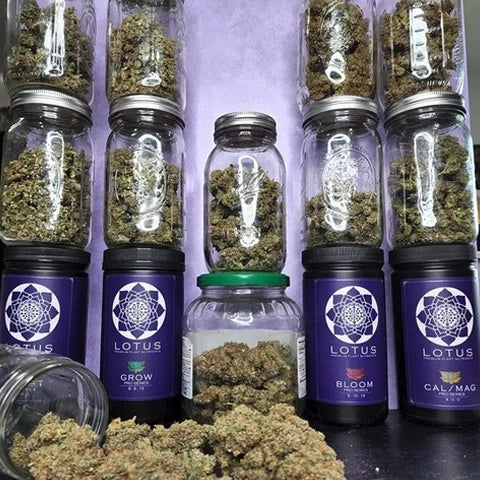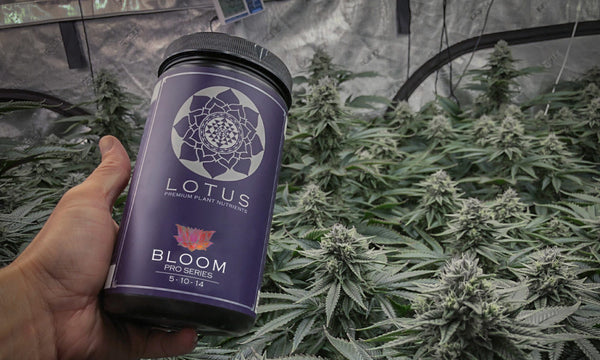A Guide to Hydroponic Plant Food

Hydroponic gardening is a fascinating and efficient way to grow plants without soil. Instead, plants are grown in nutrient-rich water solutions, making hydroponics an excellent choice for urban gardening, limited spaces, and year-round cultivation. One of the most crucial aspects of successful hydroponic gardening is providing the right nutrients to your plants.
This guide explores the basics of hydroponic plant food and how to ensure your plants thrive in this soilless environment.

A Comprehensive Guide to Hydroponic Plant Nutrition
Understanding Hydroponic Plant Nutrition
In a hydroponic system, plants obtain their nutrients directly from the nutrient solution submerging their roots. These nutrients must be well-balanced and readily available to ensure healthy plant growth. The essential nutrients for hydroponic plants include macronutrients like nitrogen (N), phosphorus (P), potassium (K), calcium (Ca), magnesium (Mg), and sulfur (S), as well as micronutrients such as iron (Fe), manganese (Mn), zinc (Zn), copper (Cu), boron (B), and others.
Types of Hydroponic Plant Food
Pre-Mixed Nutrient Solutions:
Many hydroponic growers prefer using pre-mixed nutrient solutions that come in liquid or powdered form. These solutions are carefully formulated to provide all the necessary nutrients in proportions, taking the guesswork out of nutrient management.
Individual Nutrient Components:
Advanced hydroponic growers may choose to mix their own nutrient solutions by purchasing individual nutrient components. This approach allows for more precise control over nutrient ratios, catering to the specific needs of different plant species and growth stages.
Nutrient Delivery Systems
Hydroponic systems can vary widely, from simple wick systems to complex drip systems. The choice of nutrient delivery method depends on factors such as the type of plants being grown, available space, and budget. Regardless of the system used, it's crucial to maintain proper circulation and aeration of the nutrient solution to ensure consistent delivery of nutrients to the plant roots.
Monitoring and Adjusting Nutrient Levels
Regular monitoring of the nutrient solution is essential to maintain optimal plant health. Invest in a good quality pH meter and a TDS/EC meter to measure the pH and nutrient concentration of the solution. Adjust the pH levels as necessary to keep it within the recommended range for the specific plants being grown.
Nutrient Solution Temperature
The temperature of the nutrient solution also plays a vital role in plant health. Aim to keep the solution at an appropriate temperature range for the plant species you are growing, typically between 65°F to 75°F (18°C to 24°C). Extreme temperatures can affect nutrient uptake and lead to nutrient imbalances or even root damage.
Flushing and Replenishing
Over time, the nutrient solution can become depleted or imbalanced due to plant uptake and evaporation. Flushing the system and replenishing with fresh nutrient solution is necessary to maintain the health of your plants and ensure they have access to all the essential elements required for robust growth.
Organic vs. Synthetic Nutrients
When it comes to hydroponic plant food, growers have the option to choose between organic and synthetic nutrients. Organic nutrients are derived from natural sources, including compost tea, fish emulsion, seaweed extracts, and other organic materials. These nutrients can enrich the solution with beneficial microorganisms that aid in nutrient uptake and improve overall plant health. On the other hand, synthetic nutrients are chemically formulated and provide precise control over nutrient ratios. Both options have their merits, and the choice depends on the grower's preferences and gardening goals.
Hydroponic Plant Food Supplements
In addition to the primary nutrient solutions, growers may use supplements to enhance plant growth and address specific deficiencies. For instance, adding a calcium-magnesium supplement can prevent blossom end rot in tomatoes and peppers. Silicon supplements can improve plant structure and resistance to pests and diseases. Utilizing supplements judiciously can help achieve optimal plant health and boost overall yields.
Adjusting Nutrients for Different Growth Stages
Plants have varying nutrient requirements during different growth stages. Young seedlings and vegetative plants typically require higher nitrogen levels to support leafy growth, while flowering or fruiting plants may need increased phosphorus and potassium for bloom and fruit development. Understanding these changing nutrient demands is vital for providing the right balance of nutrients throughout the plant's life cycle.
Nutrient Film Technique (NFT) Considerations
In the Nutrient Film Technique, a thin film of nutrient solution flows over the roots of the plants. Due to the continuous flow, nutrient levels in the solution can change rapidly. It is essential to closely monitor nutrient levels and pH in an NFT system and adjust them frequently to prevent nutrient fluctuations that can stress the plants.
Hydroponic Plant Food Hacks: Tips and Tricks for Success
Cleaning and Maintenance
Regular maintenance and cleanliness are crucial for a successful hydroponic garden. Keeping the hydroponic system, reservoir, and all equipment clean helps prevent the growth of algae, bacteria, and other pathogens that could harm your plants. Cleaning the system between planting cycles reduces the risk of transmitting diseases to new crops.
Water Quality
The water quality you use in your hydroponic system directly affects plant health. Tap water may contain high levels of chlorine or other chemicals harmful to plants. Investing in a water filter or letting the water sit for at least 24 hours before use can help eliminate chlorine and allow the water temperature to stabilize.
Understanding Plant Responses
Plants can provide valuable insights into their nutrient needs through visual cues. For example, yellowing leaves may indicate a nitrogen deficiency, while purple undersides may suggest a phosphorus deficiency. Learn to observe and interpret these signs to address nutrient imbalances promptly.
Implementing Nutrient Cycling
Nutrient cycling is an advanced technique that adjusts nutrient levels based on plant uptake. By monitoring the nutrient solution's electrical conductivity (EC) or total dissolved solids (TDS) levels, growers can gauge how much nutrition the plants absorb. Maintaining the EC/TDS within an optimal range can avoid nutrient deficiencies or excesses, promoting healthier plant growth.
Recirculating vs. Non-Recirculating Systems
In hydroponic gardening, there are recirculating and non-recirculating systems. The nutrient solution is reused in a recirculating system, while in a non-recirculating (or "run-to-waste") system, the solution is discarded after each use. Recirculating systems are more resource-efficient but require more careful monitoring and control of nutrient levels, pH, and potential nutrient imbalances.
pH Balancing with Acid and Base Solutions
Maintaining the correct pH range for your hydroponic system is crucial, as it directly affects plant nutrient availability. Some essential nutrients may become unavailable if the pH is too high or too low. Use pH-adjusting solutions (acid or base) to fine-tune the pH level of your nutrient solution. Automated pH controllers can help maintain a stable pH level, reducing the need for frequent manual adjustments.
Hydroponic Plant Food for Specialty Crops
Different plants have unique nutrient requirements. For example, leafy greens like lettuce and herbs may thrive with higher nitrogen levels, while fruiting crops like tomatoes and cucumbers may need more potassium and phosphorus. Researching the specific nutritional needs of your growing crops will optimize their growth and yield.
Integrating Beneficial Microorganisms
Incorporating beneficial microorganisms into your hydroponic system can positively impact plant growth. These microorganisms can help break down organic matter, improve nutrient uptake, and protect plants from harmful pathogens. Compost tea or microbial inoculants can be added to the nutrient solution or used as foliar sprays to introduce these beneficial microbes.
Nutrient Solution Monitoring Apps and Tools
Embrace technology to make nutrient management easier and more precise. Various smartphone apps and digital tools are available that help monitor and track your hydroponic system's nutrient levels, pH, and other essential parameters. These tools can provide real-time data and alerts, making it convenient to ensure your plants receive the ideal nutrition they need.
Hydroponic Plant Food Revolution: Growing Fresh, Growing Smart
Hydroponic gardening offers an innovative and sustainable way to grow plants, but success relies heavily on providing the right hydroponic plant food. Understanding the specific nutrient needs of your plants, choosing the appropriate nutrient delivery system, and maintaining proper nutrient levels are key to achieving thriving plants and bountiful harvests in your hydroponic garden. Dedication and careful attention to your plants'uirements will reward your nutritional req with healthy, vibrant, and productive crops in your soilless garden.
Happy gardening, and may your hydroponic plants flourish abundantly!




